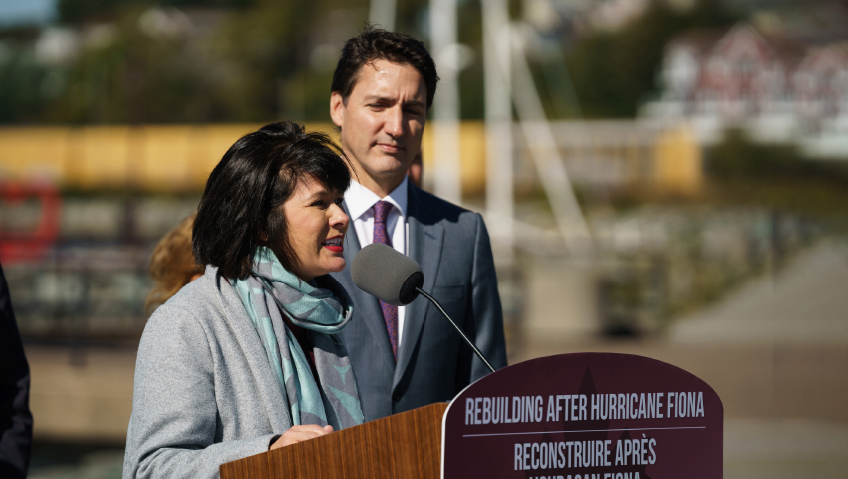As the cost of living soars and climate change looms, developing a robust stock of net zero homes might just be the best option for a more sustainable society. The Canadian government, supported by the Ontario Energy Association (OEA), aims to reach net zero emissions of greenhouse gases (GHG) by 2050.
This means Ontario’s energy system needs a significant overhaul, moving away from fossil fuels, which account for 76 percent of Ontario’s GHG emissions and 80 percent of total energy consumption.
Enter net zero homes, which produce exactly as much energy as they consume, making no net energy purchases from the power company. It’s a novel concept gaining acceptance as people grow increasingly interested in owning a home that is cost-effective to maintain as well as attractive and comfortable. Although challenging, it’s absolutely possible, and Enercare Home and Commercial Services has plenty of solutions to make it a reality.
Smart energy solutions
One of North America’s major providers of energy solutions for both residential and business services, Enercare serves 1.9 million consumers across Canada and the United States, selling, renting, repairing, and maintaining furnaces, air conditioners, water heaters, water treatment systems, and other HVAC devices.
“We’re going to see quite a demand in net zero being built in the province of Ontario,” says Nolan Leiska, Director of Builder Sales. “In 2022, probably about 300 to 350 net zero homes will be built here, and in 2023, we see that number closer to 800, based on permits. We know the building code is going to get to net zero by 2030 anyway, so some builders are being early adopters.”
Because net zero homes are made to be up to 80 percent more energy-efficient than typical homes, they start out using less energy. They can be positioned to better receive the sun’s warmth and light, a process called passive heating, and to retain heat in the winter and keep it out in the summer, they’re also exceptionally airtight and insulated.
Low-energy appliances, HVAC systems, and other electrical equipment are essential, and through technology, homeowners can regulate energy use by paying attention to how energy is consumed throughout the house.
Through solar panels, water management, smart devices, energy-efficient appliances, efficient lighting, and high-performance windows and doors, numerous ways can be found to create sustainable and comfortable living conditions.
Pressure on builders
“I think it’s also fair to say that builders are starting to feel increased pressure from their purchasers on sustainable development—that customers are looking for energy-efficient options not necessarily available in the market today,” says Scott Beneteau, Vice President, Commercial, Builder, and Strategic Partnerships. “I think that’s increasingly driving builders to start looking at heat pump technology, energy recovery ventilators, and smart home controls to manage the energy for end users.”
That includes HVAC and water heating solutions; Enercare is seeing an increasing demand for efficient, on-demand water heaters and boiler technology as opposed to less efficient, tank-style water heaters, for example.
“We’re seeing that early adopters are pushing the envelope in trying new products,” says Leiska. “For instance, we’re in the water heater business and we signed a deal for our first heat pump / hybrid-electric water heater.”
The big advantage with this kind of solution is that it isn’t gas fired; it’s essentially a renewable energy and can be used to heat the water of the home.
“I think we’ll end up seeing everything pushed to net zero electric that can be,” he adds. And once this is implemented, you should find only two gas-fired appliances in a home, one a heating source, like a small furnace, and the other a gas BBQ. Everything else should be electric.
An eye on the tariffs
To reduce monthly energy bills, families are also turning to smart home energy solutions like thermostats that can change settings automatically to meet changing energy requirements. Additionally, this technology can identify inefficiencies to reduce wasteful power, water, and gas usage. By running homes on smart technologies, energy consumption can be drastically reduced.
“Obviously, as these technologies continue to grow and we move away from natural gas and toward electrification, electricity tariff structures are increasingly important,” says Beneteau.
“There are new programs on the horizon that leverage battery technology. If you use it in your home, you get an off-peak discount on your electricity to allow you to store energy during the night or peak hours when it’s cheapest. It’s just common sense to streamline our electric base load and incentivize customers from a tariff point of view to deploy these technologies,” he says.
But it’s not just HVAC and water heating technologies at play; it’s on-site energy generation, including solar, says Beneteau. The next mass market products to follow will then likely be battery storage combined with smart panels to allow customers to store energy and have backup resilience for power outages.
“For example, we continue to see an increase in EVs (electric vehicles) being able to use the power stored in their batteries and feed it back into your home in times of an outage,” he says. “When I think about electrification, that’s really what jumps to my mind as the most likely next step.”
Following that would be central heating and cooling based on heat pump technology, which has come a long way in meeting the rigours of the Canadian winter, in particular.
The challenge of heating water
“There are very good technologies on the horizon, and I think water heating is likely the one to lag behind,” Beneteau shares. “Obviously it takes a lot of energy to heat water, and our expectations from a comfort perspective are that we have a voluminous, ready-at-hand supply of hot water. So there’s work to be done on the water heating side as it relates to electrification.”
Additionally, electricity is expensive in Ontario, so, in the formulation of public policy at the provincial and federal level, the cost of electricity itself will be a large factor, along with the carbon tax.
“There needs to be some reasonable offset, or something approaching parity, between electricity and natural gas to really get customers and builders to take up that option,” says Beneteau. “We also need to educate and convince customers that this is a good idea for the future.”
With respect to water heating, he thinks there will be a share of scepticism if electricity is the fuel that can ultimately deliver the volume of hot water we have come to expect in Canada at a price that people are willing to pay.
“As it stands today there’s a trade-off,” adds Leiska. “You can be more energy-efficient and feel good about not using fossil fuels, but you won’t feel super good when you have to take a cold shower because demand can’t keep up.”
The use of electricity for water heating certainly brings some significant challenges. Can it be done? Absolutely, says Beneteau, but you need large electrical coils to do it, which drives high costs and a heavy demand on the electricity grid.
“There are obvious challenges we’re going to face with electrification given the demands of hot water heating and the increased capital cost of acquiring these electrical heat pump technologies as compared to a conventional gas-fired system,” he says.
Heat pumps as standard
The industry is moving slowly, but there’s certainly demand, particularly in high-rise new construction where heat pumps are increasingly becoming standard, which is good to see. “High-rise new construction is an area where I expect to see tremendous growth in heat pump and smart tech deployments,” says Beneteau. “High-rise developers are building product that offers greater energy efficiency and long-term operating cost savings; however, property managers will need more support to help manage these increasingly sophisticated and connected HVAC systems,” he shares.
“One of the core pillars of our company is affordable sustainability,” says Beneteau. “What’s the mix of technologies that will ultimately get our customers to have a more sustainable home, but be able to do it in an affordable way?”
He thinks the answer is natural-gas water heating as the standard for the foreseeable future, increasingly moving to centralized heat pump technologies. However, that should be paired with battery and smart home panel technologies that offer the insights and actionable intelligence that customers need to run a home more effectively, and ultimately take some accountability for their energy consumption.
“It’s going to take a mix of technologies to deliver the affordable part of our sustainability goal.”
Leiska agrees, adding that educating the customer is vital, as most don’t know what appliances are out there.
Aiming for net zero
“Other than buying something with an Energy Star sticker and feeling good about that, you really don’t know what energy drives your day-to-day life,” he says. “Part of our smart technology would be telling you where you’re using most of your energy so you can pay attention to it. If your washing machine uses the most electricity, maybe you should be doing laundry loads at different times of the day.”
Smart home scheduling is going to be critical to managing overall energy consumption, along with heat pump technology and likely, a gas-fired, energy-efficient water heater, says Beneteau. “I think that’s a setup that can get you, if not entirely to net zero, then pretty close.”
Leiska agrees. “It’s like monitoring the performance of your home. It’s absolutely done through a combination of electric and gas and the cleanest kind of energy you can put in—and the most affordable kind of energy is electricity.”
After heating is taken care of, water will be the next challenge, says Beneteau, including wastewater conservation, and reusing the water inside the home, more goals and challenges that Enercare is looking to tackle.
“We see ourselves as a leader, somebody our customers are looking to to bring new technologies, new control systems and ultimately, deliver on the affordable sustainability that we’ve really turned our mind to,” he says.
What Beneteau would like to see includes at least a third of the construction business in the next five years moving forward with net zero configuration, or at least starting down the path at some of their sites, making them net-zero ready with devices in place and properly configured.
In the meantime, there’s work to be done on keeping our living spaces as clean and green as possible.
“Smart panels and batteries, grey water capture, and recycling,” he says. “That’s a huge step to affordable sustainability for our customers. Our ambitions in the next five years are to get a third of our customers taking meaningful steps toward net zero, or at a minimum, net-zero ready.”






